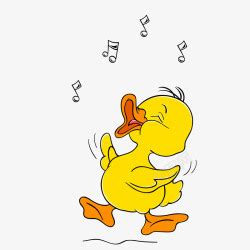Exploring the Musicality of Ducks
Music, as a universal language, has intrigued humans for centuries. But what about the musicality of ducks? Let's delve into this fascinating topic, exploring the sounds produced by these aquatic birds and the potential connections to music.
Ducks are known for their various vocalizations, each serving different purposes in their social interactions and communication. While these sounds may not fit the traditional definition of music, they possess a rhythm and pattern that can be intriguing to study.

One of the most common sounds made by ducks is the quack, typically associated with female mallards. However, ducks produce a wide range of vocalizations, including grunts, whistles, and squeaks, each with its own unique frequency and duration.
While duck vocalizations may seem random to the untrained ear, they actually serve specific functions within their social structure. For instance, ducks use different calls to attract mates, warn of danger, or establish dominance within their flock.
Researchers have found that these vocalizations follow certain patterns and rhythms, indicating a level of complexity in duck communication that parallels human language. This complexity opens the door to intriguing comparisons between duck sounds and musical compositions.
While ducks may not intentionally create music in the same way humans do, their vocalizations possess qualities that resonate with musicality. For example, the rhythmic patterns and melodic variations found in duck calls bear resemblance to elements of music composition.
Some musicians and composers have even experimented with incorporating duck sounds into their work, either by sampling actual duck calls or mimicking their patterns with musical instruments. This fusion of natural and manmade sounds highlights the interconnectedness of music and the natural world.
Studying the musicality of ducks not only provides insights into avian behavior and communication but also offers new perspectives on the nature of music itself. By exploring the similarities between duck sounds and human music, researchers can gain a deeper understanding of the universal principles that underlie both.
Furthermore, incorporating natural sounds into music composition can inspire creativity and innovation in the field of music. By embracing the musical potential of the world around us, composers can create truly unique and immersive auditory experiences.
While the idea of ducks making music may seem unconventional, exploring their vocalizations reveals a world of rhythm, melody, and complexity. By studying the sounds of ducks, we not only gain insights into avian communication but also deepen our understanding of music as a fundamental aspect of the human experience.
As we continue to explore the musicality of ducks and other animals, we open new avenues for creativity, scientific inquiry, and appreciation of the natural world.
